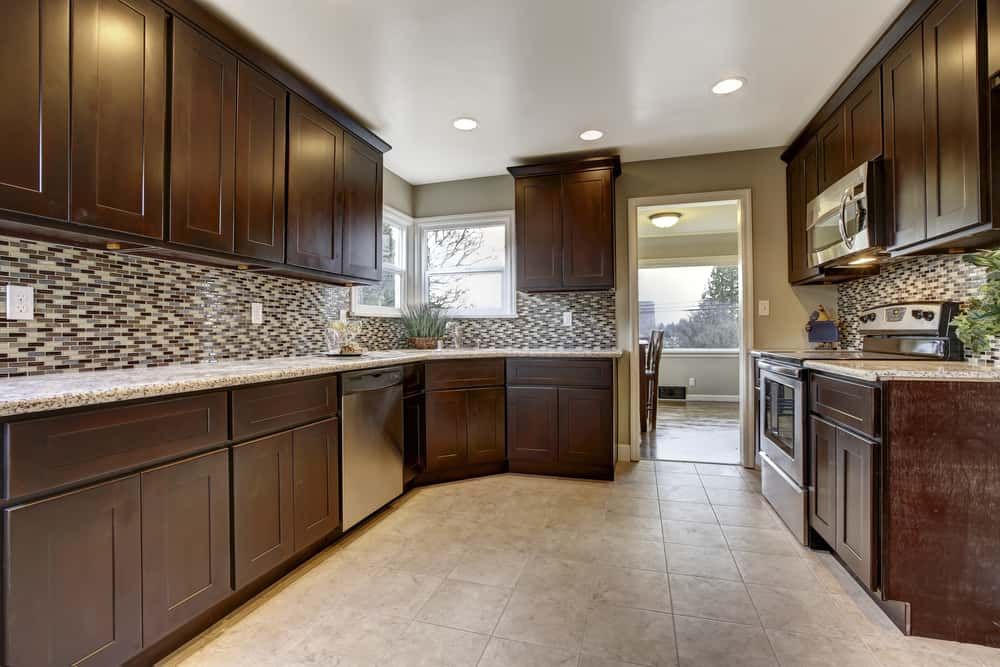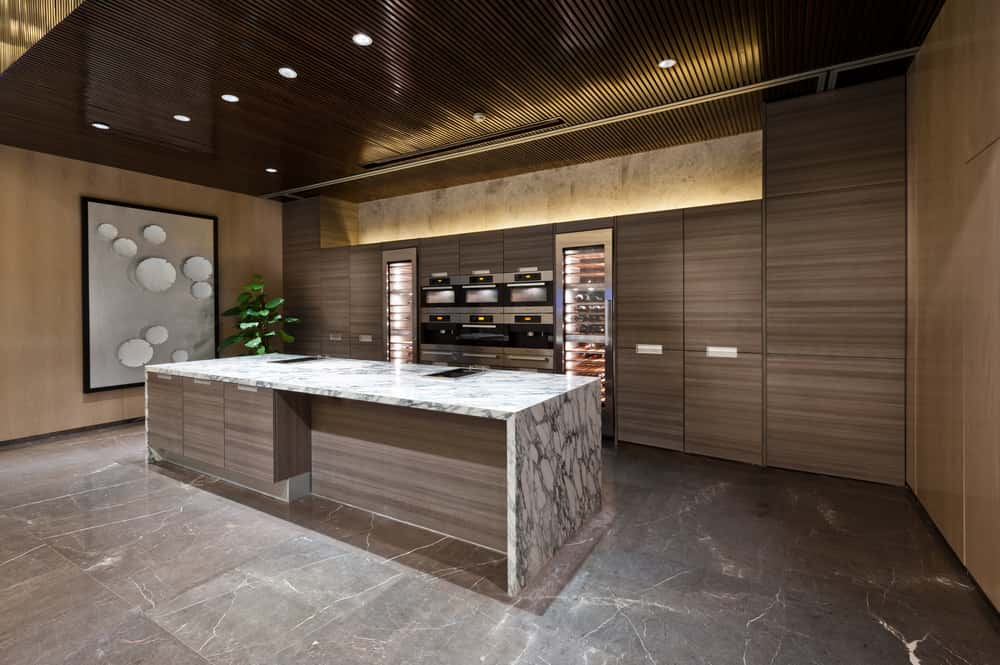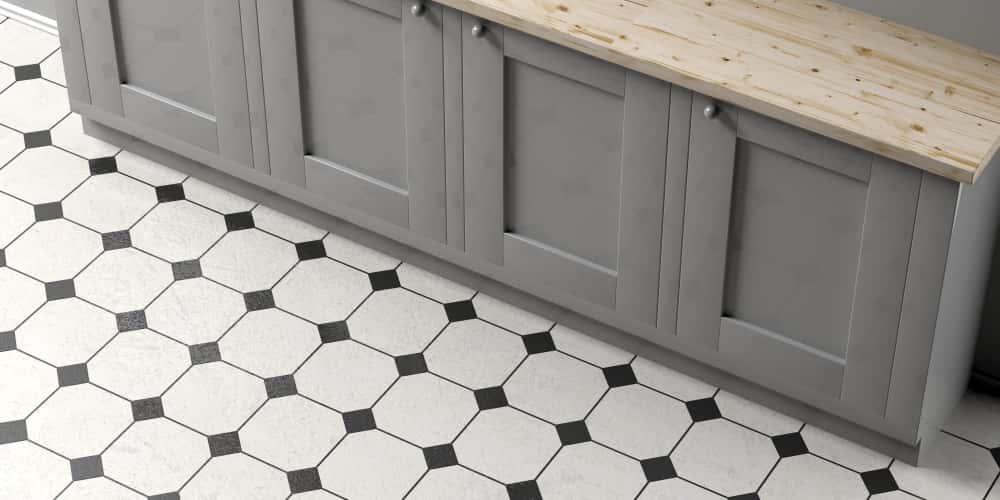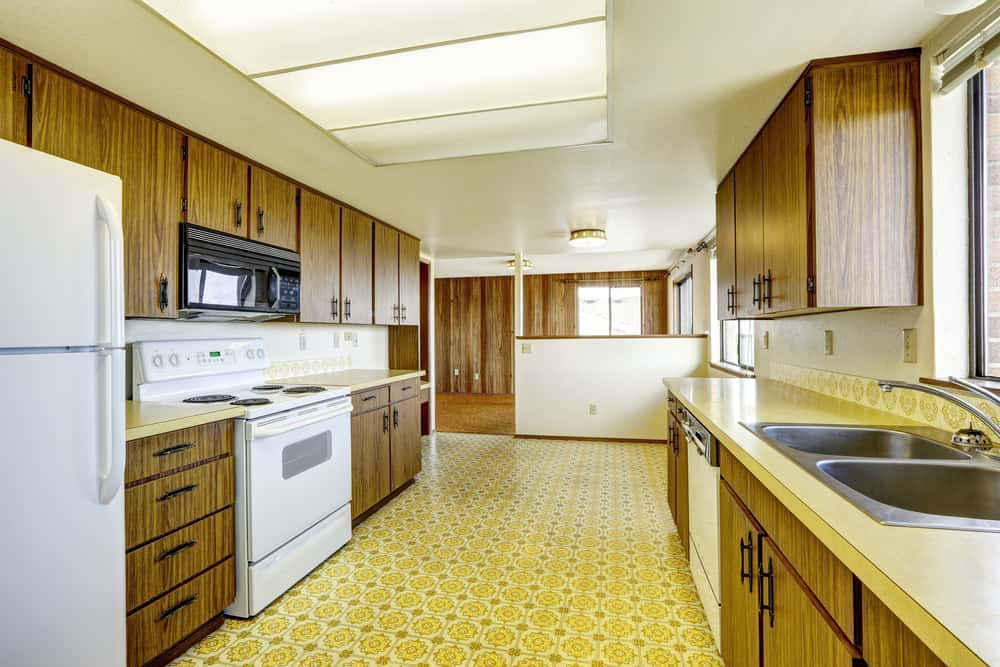While kitchen cabinets and the countertop set the tone for the aesthetics of your kitchen, the flooring and the backsplash tiles add functionality. The kitchen is undoubtedly one of the most used rooms in your home, and the floors should be hard-wearing and durable. There are multitudes of flooring options for the kitchen, and you might be wondering how to narrow down your choices! Here is the lowdown on the options, and the pros and cons of each.
Vitrified tiles
Vitrified tiles are available in a wide range of colours, patterns and textures, ranging from stone to wood lookalike options. They are incredibly durable, never get scratched, and are easy to maintain. This makes them a very popular option for the kitchen floor.

Marble and Granite Flooring
Marble lends a luxurious look to any interior space, and as it is available in large slabs the number of joints is minimised, making it easy to keep clean. However, marble is not the first preference for a kitchen floor, as it is high maintenance and could absorb stains if the surface is not sealed well. Also, polished marble can get slippery when wet.
Granite is harder and more durable than marble, but polished granite gets very slippery when wet, so should be used with care in the kitchen.

Ceramic Tiles
Ceramic tiles are made of earthen clay, pigments and are glazed to a fine finish. They are more porous and brittle than vitrified tiles but also come at a lower cost. These tiles are available with printed and patterns designs and also in a wide range of solid colours.

Linoleum and Vinyl Floors
Once a very popular flooring option, vinyl floors are losing their edge as they contain synthetic materials which could be harmful in the long run. These floors are still used in industrial-grade kitchens where there is high traffic. Linoleum, on the other hand, is eco-friendly as it is made of organic natural materials like cork, linseed oil and wood powder. These floors can be laid very easily over an existing floor and are durable and cost-effective.

Frequently Asked Question on Kitchen Flooring Tiles
1. What are the factors you must consider when choosing kitchen tiles?
Durability is one of the most important factors, as this floor will be subject to rough use. The tiles should be non-porous, stain-resistant, and should be easy to keep clean. Besides this, the colours, styles and patterns you choose should match your décor theme.
2. What are the ideal flooring colours for a compact kitchen?
If your kitchen is on the smaller side, using light coloured tiles will make your space appear more spacious and brighter. Dark colours will visually shrink the space available.
3. Why is it important to choose anti-skid flooring tiles in the kitchen?
The kitchen floor is likely to take quite a few spills. If the floor is too smooth or polished, you could take a nasty toss, which could prove disastrous if you are carrying hot dishes.
4. What are the disadvantages of using wooden flooring in the kitchen?
Wood is flammable and is not the best option for the kitchen. It also does not take kindly to water and can stain with spills.
5. Can we use a combination of flooring materials in the kitchen?
Yes, of course; but do ensure that it does not end up looking too busy. In a small space, using tiles that are heavily patterned or of different shapes and textures could become a bit overwhelming.
6. Do the wall tiles and the floor tiles have to match?
The tiles used on the floor must be anti-skid and matte, while the wall tiles can be either glossy or matte. While they don’t have to match, the colours and designs should complement each other for a cohesive look.
7. Can we experiment with tiles laid at an angle or in herringbone style in the kitchen?
Of course, you can! The sky is the limit to your creativity.
8. How should the kitchen tiles be maintained?
Non-porous vitrified and ceramic tiles can be mopped every day to keep them clean. If you are using softer varieties of natural stone floors, such as marble or Jaisalmer stone, do ensure that they have a layer of sealing protectant or polish so that they do not absorb stains.
So now you’ve got all the facts at your fingertips, we hope you’ll have an easier time making your tile buying decision! For help in putting your interior look together, drop into any of the HomeLane experience centres. Our talented designers will give you all the ideas and tips you need!




